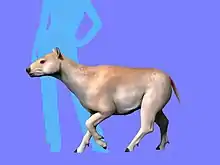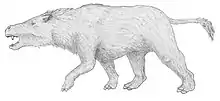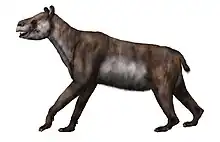| Umayodus | |
|---|---|
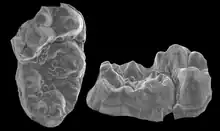 | |
| Tooth of Umayodus | |
| Scientific classification | |
| Domain: | Eukaryota |
| Kingdom: | Animalia |
| Phylum: | Chordata |
| Class: | Mammalia |
| Family: | †Didolodontidae |
| Genus: | †Umayodus Gelfo & Sigé, 2011 |
| Species: | †U. raimondi |
| Binomial name | |
| †Umayodus raimondi Gelfo & Sigé, 2011 | |
Umayodus is an extinct genus of "condylarth" mammal from the late Paleocene or the earliest Eocene.[1] It is a didolodontid which lived in what is now Peru. It is known from the holotype LU3-801, an isolated right third molar, which was found in the Muñani Formation of Laguna Umayo, Peru. It was first named by Javier N. Gelfo and Bernard Sigé in 2011 and the type species is Umayodus raimondi.[2]
Phylogeny
Cladogram after Gelfo and Sigé, 2011:[2]
| ||||||||||||||||||||||||||||||||||||||||||||||||||||||||||||||||||||||||||||
References
- ↑ Umayodus at Fossilworks.org
- 1 2 Javier N. Gelfo and Bernard Sigé (2011). "A new didolodontid mammal from the late Paleocene–earliest Eocene of Laguna Umayo, Peru" (PDF). Acta Palaeontologica Polonica. 56 (4): 665–678. doi:10.4202/app.2010.0067.
This article is issued from Wikipedia. The text is licensed under Creative Commons - Attribution - Sharealike. Additional terms may apply for the media files.
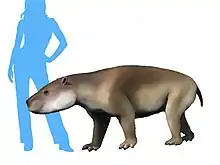
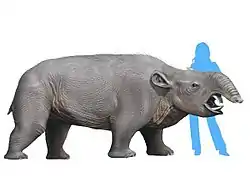

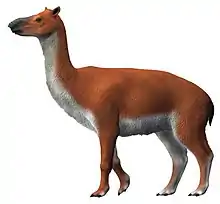
.jpg.webp)
